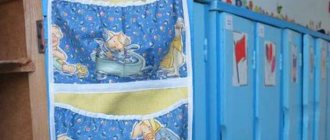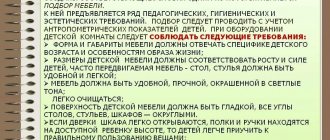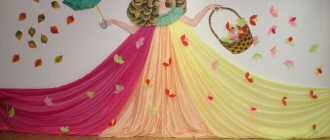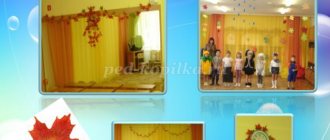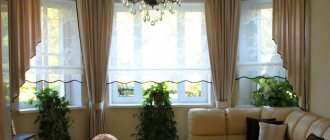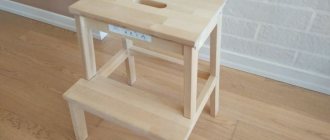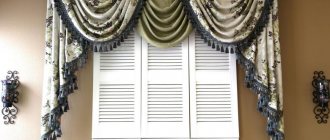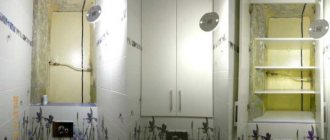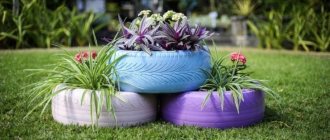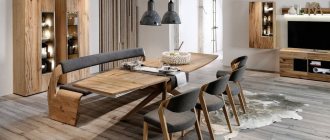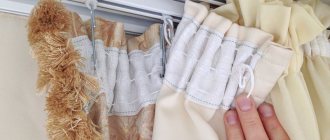Features and purpose
Lockers in kindergartens are most often narrow, with a small number of shelves that do not fit all the necessary things.
It is still difficult for a child to find the right item without outside help. The best option is pockets for a children's locker in the kindergarten. The organizer is attached to the door, has several sections (large and small), can be easily removed, washed or washed. This is especially convenient for small items that can easily get lost on shelves. While in the garden, a child may need the following things: panties, socks, tights, T-shirts, replacement shoes. In addition to a change of clothes, the baby needs to have a sports uniform and Czech shoes. There are also personal hygiene items - a towel, handkerchiefs, combs, hairpins, elastic bands. To make it easy for your child to get what they need, you should use hanging pockets for the kindergarten locker. A mother who purchases a ready-made organizer or creates one herself should carefully consider the number of departments and their designations. It’s easier to get what you need if you divide the space into zones:
- for essential items;
- for small accessories;
- for small toys;
- for small personal items.
Pockets for a kindergarten locker, in addition to their main function, contribute to the development of motor activity of the baby’s fingers and memory.
What are pockets for?
In addition to replacement T-shirts and panties, the baby will need a comb, shoes for dancing and physical education, sportswear, a jacket, tights, and socks. Very little babies need a bib, girls need hairpins and rubber bands. Keeping it all in order without taking up too much space is the main purpose of hanging pockets.
Varieties
Hanging pockets differ in the method of fastening:
- loops or eyelets - they are traditional and most reliable, fixed to the doors with screws or hung on hooks;
- elastic - does not require additional fasteners, but sags under the weight of clothing;
- adhesive tape with a folding top, easy to attach, quick to remove;
- fastenings with double-sided tape are not practical, but they “save” in a situation where for some reason it is impossible to screw a nail or screw into the door.
Pockets for a locker in a kindergarten can have different compartments:
- with elastic;
- closed flaps with Velcro or button;
- open compartments;
- with personalized embroidery or applique of an image of your favorite character.
The existing options for pockets with a folding top edge on the front of the locker are very practical; they are equipped with an inscription with the child’s name, a memorable bright picture, by which the child can easily find his locker among others.
On adhesive tape With a folded top On loops
The following are distinguished by size:
- giants, all over the door;
- medium, occupying ¾ of the surface;
- small.
Preference should be given to large and medium pockets on the doors; they will be relevant throughout the entire kindergarten life of a little person in any situation. As the child gets older, the number of changing things in his pocket may decrease, but the size of the clothes itself will increase. Options with a small number of compartments do not cope with their function, are extremely inconvenient, and can only be useful for a while until the baby has a full-fledged organizer.
Types of pockets
Hanging sachets are divided into three groups:
- according to the method of fastening;
- by type of department;
- to size.
By mounting method
There are different ways to attach an organizer to a cabinet, each of which has its own pros and cons.
On loops - this is the strongest and most durable type of fastener, it will withstand any weight. The loops are put on hooks or screws. But not everywhere they allow such “desecration” of the kindergarten’s property, that is, you can’t screw anything into the doors.
The product with an elastic band is simply attached to the door and removed for washing. However, under the weight of things, the elastic band stretches and the structure sags.
Adhesive tape, usually with a folded edge. The pocket can be removed and hung in a matter of seconds. Such sachets are also convenient because on the bending part, which remains on the outside of the door, you can applique or embroider with the owner’s name. Or just sew a bright picture. Then the baby will never confuse his locker with the neighbor's.
Double sided tape. Fast and easy, but, alas, the most unreliable method of fastening.
By branch type
The compartments of the children's organizer have several options:
- open pockets:
- on an elastic band;
- with a closing flap (usually fastened with Velcro or a button, less often with a button);
- on a zipper.
Open compartments are good for small items, such as a comb. If the item is large, then in order to avoid unsightly bulging of the pocket and its contents falling out, you should think about a clasp or elastic band.
When choosing a clasp, focus on how easy it will be for your child to open and close it. Velcro and snaps are a great option. If you don’t want to fuss with fasteners, then just run an elastic band along the top of the pocket. A compartment with a zipper will keep small things safe: rubber bands, hairpins and even tiny toys.
And another important detail is the design. Pockets decorated with embroidery or applique with the image of your favorite cartoon character will look beautiful. Personalized accessories are especially popular.
If we talk about size, there are three types:
- large ones - for the entire door;
- medium - from half to three quarters of the surface;
- small ones - take up less than half.
If you want the pockets to serve your child for more than one year, give preference to large or medium ones. As the child grows, the size of the clothes will increase, so over time a small sachet simply won’t fit everything you need.
Handmade: DIY wall organizers
— by category — Life Style ᄂLife Style
10 September 2014, 00:00 | Galina Zamyslova
What is the hardest thing to keep in order? That's right - in the little things! There are a lot of them, they tend to roll up and fall over, but they should be at hand and in sight.
Having laid them out in neat boxes, we often forget where and what is stored, and during the next “general analysis” of shelves and drawers we discover a lot of new things from the well-forgotten old ones.
Where is the exit? In our hands! Let’s occupy these hands with a useful task, now called the fashionable word “handmade”, and, rummaging through the heap of unnecessary and out-of-use items of clothing and leftover fabric, we will choose something suitable for making a wall organizer.
Why are wall organizers with pockets so good? They contain a thousand little things without hiding them from our eyes. You can conveniently place the most necessary tools in them, which should always be at hand and in sight. They will take pride of place in a schoolchild’s corner and a needlewoman’s cozy little world; they are convenient in a garage and a small apartment.
Without taking up extra space, they are easily placed on the wall, door, inside of the cabinet door and on the rod of the wardrobe. Of course, you can also buy ready-made organizers for the bathroom and hallway, for jewelry and even shoes.
But made with your own hands, taking into account individual requirements and “customized” to the needs of each member of the family, they are much more convenient and original.
Let's start with recycling old jeans into the right thing - there is enough of this goodness in any home to be enough for both a base and a bunch of pockets, especially since each pair of jeans has two ready-made patch pockets! Denim organizers are suitable for tools, toys, and school stationery.
Our favorite cosmetics are expensive in all respects, all these brushes, small jars and lipsticks. They put boxes and cosmetic bags in the chest of drawers, and then one rolled away, then the other was out of sight and forgotten. What should I do? Sew a couple of organizers for cosmetics.
For brushes, a flat organizer with one patch pocket, divided into narrow compartments with a simple straight stitch, is suitable. If you equip such an organizer with a couple of loops and a pair of ties, then you can hang it next to the mirror and take it with you, rolling it into a roll if necessary.
A hanging organizer is also useful in a nursery - for schoolchildren for an office, and for children for small toys. The main thing is that there are enough pockets for their most important needs!
By the way, sewing voluminous pockets is not at all difficult; they are made from ordinary rectangles!
The simplest organizer can be made from plain or small patterned fabric for essential items: phone, charger, glasses, phone book, etc. A hanging organizer can become not only a useful item, but also an interior decoration if knitted from bright yarn. This one is perfect for girls too - after all, they have their own secrets, their own secrets!
Jewelry lovers find it difficult to resist buying a new treasure and even more difficult to quickly find the right piece of jewelry that matches their outfit. And here a hanging organizer with many pockets will help us out. And so that your wealth does not catch the eye of those who should not, it can be hidden between the dresses in the wardrobe. In this case, you can even make it double-sided!
The same option is suitable for lovers of needlework - everything is in sight! An organizer that can be placed right in front of you, secured under the bed of a sewing machine or to the desktop table top, will also be convenient. There is no need to reach anywhere and rummage through boxes and drawers, because scissors, chalk, and pins are always nearby. A large compartment is also useful - for scraps of thread and fabric that tend to spill onto the floor.
An organizer with pockets can also be a good gift! For example, for amateur gardeners it will turn into a storage for packets of seeds. And for Christmas, you can sew a calendar organizer with little surprises in each pocket for every day.
What can be placed in the convenient pockets of the hanging organizer? Children's toys and stationery, light tools and magazines, slippers and bath towels, cosmetics and jewelry. Try it yourself – it’s very convenient!
Galina Zamyslova , etoya.ru
handmadecharlotte.com, thedomesticdiva.wordpress.com, makeit-loveit.com, themotherhuddle.com, with-heart-and-hands.com, talfonso.hubpages.com, media-cache-ak0.pinimg.com, vintagemint.com, architectureartdesigns.com
online now
Romargo, alba2602, wildrose2000, anzhelika888, nadiu, EvgeniyaVV, -=zulfiya=-112, [email protected] @2017, ~~kisa~~, Sonobella, Mario82, gas, kotyaoz, irina030186, mg1971, tany42, igrishina84, leirina, olechka-plotnikova, Svetlana_sky_7, Mary7766, evvvva, Katyzar666, Olchik3101, Milada68, Yulia_V, tuyano4ka, ZhenyaPo, Lizon, Khazan, asya-borodina, zstarz, urenfornreg, AKhoroshikh, mila_201612, aleks57, natalia0406, Beauty2 2, Makarona, iikuzmin, tanusha1719, marinaPRS, guzel28, P_K, coveredveil, YuliaPechnikova, zhanna75, Juliana Faggotura, lubarol, glenochka, NataliMirosh, -=olga=-1, Strogan, 8787, jannnnnna, chistova_olga, Tigrenochek8, Hungary, Rammstein1, Ksenia988, anastasiya_93, Margerita, [e mail protected] @vk, ALenaV067, vimusic, Lenok2212, comea, Nancy Key, kristi20031991, Lovemel, Vega28, lambordini, evgent, nice.buruhina, Vlada St, RVG, Katerina0486, valeriavladim, Katya_c06, Oks.yusha, RelativisticJet, Coniglio, olga .macepuro, VikaMokka, feok
Source: https://iledebeaute.ru/lifestyle/2014/9/10/46604/
What material are pockets made of?
The material for the cabinet organizer can be different:
- thin flexible plastic;
- fabric with water-repellent properties (Bologna, raincoat fabric);
- ordinary textiles (calico, cotton, linen, felt, etc.)
Plastic sachets are easy to care for, they are easy to clean, and can be easily treated with suitable disinfectants without prior dismantling. It will not be easy to make such an accessory at home, but you can buy it in almost any specialized store. In some preschool institutions, hanging pockets are purchased centrally. But making it with your own hands will not be difficult even for a person who has only basic cutting and sewing skills.
Manufacturing materials
For making pockets in cabinets, a fabric that retains its shape well is suitable. Its color should be attractive to the child, with a cheerful pattern or plain if you plan to apply an applique. The following types of materials are used in the manufacture of the organizer:
- water-repellent fabric (tarpaulin, raincoat);
- thick textiles or cotton;
- thin plastic sheet.
More practical is water-repellent material or plastic. The first one washes well and gets dirty a little. To remove light stains, you can simply clean the organizer with a damp soapy sponge and let it dry. It is difficult to make a plastic product at home, but such pockets can be purchased in specialized stores. They are more convenient to clean, since they can be washed directly on the door. Kindergartens often purchase just such options. If parents have needlework skills, then you can sew the pockets yourself.
How to do it yourself
First you need to come up with an idea; you can spy it on a photo or invent it and develop it yourself, carefully calculating all the details and thinking through the design. Homemade has a lot of advantages:
- manufactured exactly according to the dimensions of the cabinet;
- it can be sewn from leftover fabric;
- here you can vary the size and shape of the pockets;
- decorating a product is interesting, it’s fun to do even with a child!
Sometimes kindergarten cabinets have a rounded top, in this case we sew the base taking this feature into account. Here you can place an additional compartment for a children's book or other useful little things. An organizer for a kindergarten locker should be easy to wash and be safe for children: it is not allowed to decorate your creation with small details (beads, buttons, seed beads) that children can swallow.
Required materials and tools
To sew a pocket in a closet with a door area of 80x30 cm you will need:
- 1 meter of main fabric;
- 1 meter of lining;
- interlining;
- scissors;
- threads;
- sealant for rigidity (plastic, laminate backing, foam rubber);
- Velcro or buttons for fastening;
- rubber;
- decorative elements with a children's theme (ribbons, trim, appliques, embroidery)
The fabric should be easy to wash and dry quickly. It is better not to use cardboard to stiffen the pocket; it is short-lived and tends to deform during washing.
The organizer will not fold in half when all the pockets are full if you insert bamboo sticks 1-1.5 cm thick from the top and bottom. To do this, sew a drawstring or loops on the back side of the base. The sticks should be easy to remove, because the product will have to be washed often! If plastic is used for rigidity, additional fixation with sticks is not required, but it is necessary to provide the ability to remove it before washing, for example, provide the base with a zipper.
Cutting the product
From the selected fabric, 2 base pieces 80x30 cm are cut out, and several pockets are cut out: two 40 cm each for a sports uniform and a change of clothes, and one or more additional ones for other accessories. If the size of the locker allows, and the baby has not yet learned to fully control himself and sometimes wets his pants, another pocket would be useful - for used clothes that need to be taken home from the garden. All pocket details, except the base, are duplicated on the lining fabric and non-woven fabric.
We will make one pocket, for example, the top one, from mesh. This will make it easier for the little person to find a comb or handkerchief without looking into every pocket. Don't forget to add seam allowances: 1 cm on the sides and 2 cm on the top side of the pocket for inserting elastic.
We cut the material into 3 parts 33x38 cm
Branch processing
If desired, the pockets are decorated with embroidery or appliqués with favorite fairy-tale characters are glued on. It is better to do this before the part is sewn to the base of the pocket. Next, the corresponding parts of the main fabric, interlining and lining are combined and stitched together with a running stitch. Fold the top of the pocket compartment inward and stitch it - an elastic band is inserted here and secured along the edges, having previously pulled the workpiece to 30 cm. The lower edge of the pocket on both sides is placed in deep folds, they are necessary to create volume and to remove excess width. The pockets can be closed with flaps, which are cut out separately in the shape of a trapezoid or triangle. Velcro is used as a fastener - it is completely safe for children.
Fold the parts in half. Sew along the long side, 1 cm away from the edge. Turn the parts inside out and sew close to the fold.
Stepping back 0.5 cm from the edges, lay folds 2 cm deep and iron
Pockets are forming
Assembly order
The bottom of the pocket is sewn to the base using a hidden seam. It is turned over and the sides are sewn. Repeat this for all other pockets, slightly retreating from each other. An additional vertical stitch is laid along the upper compartment, marking a compartment for a comb. When all the pockets are ready, the main parts are stitched, folded with their right sides facing each other. The bottom side is left unstitched. Turn the product inside out, insert a seal between the base parts to stiffen the pocket, and sew up the remaining edge. The pockets around the perimeter can be trimmed with original braid with a children's theme, and along the edges, using an awl, you can pierce holes for eyelets or make loops from the same material as the product itself. Your child will certainly enjoy decorating his pocket with fabric self-adhesives with images of his favorite fairy-tale characters; don’t deny him the pleasure of helping you! The hanging organizer is ready, all that remains is to hang it in the baby clothes cabinet, securing it to the door with screws.
The baby will be able to be proud of the pocket that his mother sewed and decorated with him! A quality item will be useful to the child even after kindergarten is left behind. There will definitely be a place for the pocket in the nursery, bathroom or hallway.
We lay out the parts on a felt base and sew them on
Stitched pocket
We place the binding on the felt face down, pin or baste it. Turn the binding over to the wrong side of the base, turn it over and hem it. Install the eyelets in the upper corners. We tie the cord. Velcro can be provided for pockets. Ready pocket
Simple envelope pocket
Made very quickly from a square sheet of paper. It is based on the principle of adding corners towards the center. Let's take a closer look.
First let's find the middle. Fold the paper in half or use a ruler. Expand the sheet. Fold the corners opposite each other to the marked line. In principle, you can wrap the edges overlapping. Half of how to make a paper pocket is already done.
Now fold another corner (bottom or top). It should lie so that it can cover the central part. Secure it to the other edges with glue or double-sided tape.
Fold the remaining corner down. Decorate the envelope as desired and secure it in its rightful place. Now you can use the pocket!
Master class on making a pocket
To sew a wardrobe for children's clothes with the chosen pattern, you first need to make the base and then sew the pockets to it. How to make this is described below.
Various design methods
Pattern
If we consider a pattern for a pocket for a locker in a kindergarten, made by ourselves, measuring 80 by 30 cm, then you need to start by preparing the base. To do this you will need to make two pieces of fabric of this size. You will need two large pockets and several smaller ones.
Material for cutting
Assembling (sewing) yourself
When sewing a pocket, you need to fold three pieces of the same shape:
- main fabric;
- non-woven layer;
- lining
They are placed in the order indicated and sewn with a running stitch to the base. The top of each pocket is folded inward. Then it needs to be stitched. In this case, a pre-prepared gum is passed inside. It is slightly pulled together and secured along the edges of the pocket.
The bottom of the pocket is sewn using a hidden seam. Then the sides are attached.
How to form pockets
Hallway organizer
To avoid clutter in the hallway from scattered small items (mittens, scarves, scarves), sew an organizer with pockets convenient for this purpose. Such an organizer, by the way, can be hung on a closet door or on the hallway door. From any thick fabric (you can use, for example, out-of-use curtains), cut out two identical pieces measuring 40 x 80 cm (they can be cut to any size as desired). Sew these pieces first with the wrong side up, and then, turning them right side out, stitch along the edges. Now cut four more strips from the same or another fabric that matches the color. From the strips, make four lines of pockets, each with three pockets (you can vary the number as desired). Tuck the upper edges of the stripes and trim them with beautiful braid or appliqué. Then add depth to each pocket using two folds that are not secured at the top (otherwise the filled pocket will protrude greatly). The entire strip with folds is attached on three sides, as well as between the pockets. The bottom edge of the bottom line of the pockets is sealed with braid or finishing fabric, which will close the edge and strengthen the folds.
Phone organizer
How often do you find your pen or notebook missing when you're on the phone? This can be avoided by sewing a small organizer and placing or hanging it near the phone. The organizer is easy to sew - we sew a long and narrow pocket for a pencil or pen on a base of thick fabric. Another compartment, a little wider, is for an alphabet notebook. Or you can stitch a strip, and then use stitches to “make” pockets.
Bathroom organizer
There are always a lot of different necessary little things in the bathroom - brushes, creams, deodorants. In order for them to be in proper order and in a certain place, we suggest sewing a case. Depending on where it will hang, it can be made larger or smaller. It is better to make all the details of the pockets in different sizes, from fabrics with different patterns. You can also use oilcloth for the product. All parts are cut out along the grain thread with 1 cm allowances along the cuts. Each pocket is edged with bias tape. You can see how to properly edge parts in the master class Edging seams. The finished width of the edging is 0.75 cm. The bottom pocket is made large, which should be carefully stitched to the base. A rail is inserted into the upper drawstring, which is attached to the wall. Don't forget the hanging loops.
Using the same principle, they make a case for storing necessary things in the kitchen (various brushes, powders, napkins) so that they are always at hand.
Organizer for small items
Pockets for storing small and small items (glasses, combs, knitting needles, scissors, etc.) can be of various sizes and shapes.
An organizer for glasses can be made from bright felt. Glasses are put away in a pocket specially designed for storing glasses. The organizer can be folded and fastened with a button, but you can also hang it on a wall or door handle near your workplace using a loop. This way, you are less likely to break or crush your glasses.
It is convenient if combs and necessary toiletries are always at hand, near the mirror that hangs on the wall. A small sachet will be useful for this.
Using the same principle, unique pockets for scissors, measuring tape, crayons, and a thimble are made. Several spare buttons, pins, and small spools of thread will also be placed here.
The case can be folded, in this form it will take up no more space than a wallet and will not weigh down the bag, but at the right time everything you need will be at hand.
Thanks to such pockets, you can greatly increase the capacity of your wardrobe, and there is also room for many important little things.
Closet organizer
To sew the closet organizer, I used two types of fabric - flannel and chintz. I cut out 2 rectangles 40 x 80 cm from flannel and polyethylene. I stitched the edges together, leaving 10cm for turning. I turned it right side out and sewed a finishing stitch around the edge. The base for the pockets is ready. I sewed pockets of different sizes onto the base. I made three large pockets. The lower, middle and upper pockets are rectangles approximately 25 cm high and about 50 cm long (40 cm is the width of the base and + 10 cm for folds and gathers). I gathered the top of the lower and upper pockets with elastic, and placed folds along the bottom of the pockets. The pockets turned out to be voluminous - they fit a lot of things. I sewed pockets on the top pocket - for handkerchiefs, creams, etc. The pockets are arbitrary in width and length. In order to prevent the pockets from sagging too much due to an overabundance of things, I sewed and stitched loops to the base, and sewed buttons to the pockets. Buttons and loops can be replaced with Velcro tape (Velcro). I sewed such an organizer after reading the book “To Help Housewives.” I used some quotes from the book in this article.
Handicraft organizer
Organizers for handicrafts vary in purpose. A needlewoman who is interested in sewing will be interested in this organizer, which is easy to make with your own hands.
For those who like to knit, you need a case for knitting needles, which is made on the same principle as a case for glasses.
The base is made of cardboard covered with fabric, the pocket and lintel are made of any bright patterned fabric. Height - 45 cm.
The frame of the craft box is covered with fabric. Pockets for scissors, knitting needles, glasses, etc. are sewn on before the frame is covered.
Organizer for the artist
An artist's folder can be made simply. Two rectangles of the required length and width, depending on the size of the sketches, are cut out of cardboard and covered with matting or harsh canvas.
They are sewn together, wearing straps and fasteners are sewn on. You can make a beautiful applique from colored fabrics - for example, a jug for brushes and a cup for pencils.
How to make your own diagram
If you want to make pockets in a kindergarten locker with your own hands, you should use the manufacturing tips. There are many advantages to this process:
- you can make an organizer, taking into account the dimensions of a specific pencil case;
- if there are enough leftover fabrics, they can be used, which will not require extra costs;
- the organizer can be made of any size;
- decorate the product with what the child likes best.
Tools and materials:
- thick fabric (1 m), braid, interlining for compaction, calico for lining, padding polyester;
- scissors, threads, elastic bands, Velcro, decor.
Having prepared the material and decided on the pocket option, you can get to work. To get a beautiful product, you need to think through everything to the smallest detail, choose the fabric, choose the base.
Pockets are created according to the following scheme:
- Cut a strip of fabric 25-30 by 140-150 cm. Fold it in half, this will be the base. If you need to compact the product, insert interlining between the layers.
- We select blanks for pockets (3-4 pieces of colored or plain fabric, decorated with appliqué), the sizes depend on the quantity and width. Additionally, you need to make a provision for free placement of items.
- If the compartments are on an elastic band, cut it into pieces.
- We stitch the top of the pocket, insert an elastic band and secure it to the edges.
- We make a mark on the base and sew the pocket on three sides. The edges at the bottom of the compartment can be gathered, leaving room for larger items.
- At the top, above the last section, you can place an applique with a name. We cut out letters from felt. If the pockets are plain, they can be decorated, for example, by sewing on images of socks or T-shirts. Then not only the child, but also the kindergarten staff will understand where everything is located.
- If the organizer will be attached with elastic bands, you need to sew 35 cm of tape on both sides of the base.
- To finalize the edges of the product, cut the fabric or braid 3-4 cm wide and sew along the edge.
- The pockets are ready, such a high-quality item will be useful to the baby not only in kindergarten, but also at home. Creating an organizer will not take much time. In addition, the child will probably be interested in helping his mother decorate the new thing.
Required materials and tools
In order to begin production, you will need to prepare the necessary materials and tools. For the master class, you will first need to determine what model of organizer will be created and choose the method of attachment to the door.
The following materials can be used as a base:
- Thick fabrics: tarpaulin, raincoat fabric, fabric from old jeans or similar.
- Thin sheet of plastic.
- Almost any textile can be used, but its strength will be lower than in the cases discussed above.
You need to draw a diagram according to which the master will carry out the work. Based on this, the required materials are calculated. For example, for an organizer measuring 80 by 30 cm, you will need to prepare the following:
- 1 sq. meter of main and lining fabric;
- non-woven fabric in the required quantity;
- scissors, awl, threads and needles;
- sealing material will be required to increase rigidity;
- Velcro or buttons - for fastening pockets;
- a little elastic;
- materials for decoration.
You might be interested in Simple ready-made patterns and sewing a sweater with your own hands
When thinking about how to sew pockets for a child’s kindergarten, it is better to try to make not just a place to store a change of clothes, but also a beautiful piece that can please the baby. For this purpose, you can use appliqués, embroideries, ribbons, braid or other similar materials.
Various options
When creating this product, it is necessary to ensure that it can be easily washed (regardless of size) and dried just as easily and quickly.
Note! It is not recommended to use cardboard to increase rigidity, as it can become deformed as a result of washing.
All things are laid out in order
You can use two wooden strips to decorate the top and bottom edges. Not only will they improve the appearance, but they will also prevent the structure from collapsing when the pockets are overfilled.
We sew pockets in a locker for a kindergarten with our own hands
To make pockets, you will need to take 2 types of fabric: elegant calico with a printed pattern for the visible sides, and white calico for the lining. Before starting work, it is advisable to wash, dry and iron all fabrics so that they immediately shrink as much as possible.
The finished size of the pockets is 65*25 cm. From the main and lining fabric, cut out 2 blanks measuring 68*27.5 cm. This will be the basis of the pockets for the wrong side and the lining for sewing on the pockets
- From the main fabric, cut out 3 pieces of pockets measuring 22.5 * 27.5 cm. Glue the upper sections of the blanks with adhesive dolikov, cut in the form of strips 1 cm wide. They will protect the upper edge of the pockets from being pulled out during use.
- Also, from the main fabric, cut out 3 parts for the facings of the upper sections of the pockets - rectangles with dimensions of 3.5 * 27.5 cm
- Then you can start sewing. First, iron the lower longitudinal section of each facing 5 mm towards the wrong side.
- Then place the facing on the pocket, face to face, align along the top edges, pin
- Sew the facing with a 7mm wide seam. Remove the pins
- Press the facing seam onto the facing. Fold the facing onto the wrong side of the pocket and iron it, fixing a transition edge 1-2 mm wide from the main part towards the facing, pin along the lower (ironed) edge to the pocket
- Place finishing stitches close to the top and bottom edges of the facing, remove pins and iron
- Prepare all the pockets in the same way.
- Then continue working with the lining of the pockets. First, place the first pocket on it, aligning it along the bottom and side edges and pinning it with pins. Then mark the place where the first pocket begins, add 5 mm upward and draw a line - this will be where the bottom cut of the second pocket will be applied. Attach it to it, pin it and sew it with a seam 7 mm wide
- Iron the second pocket up, stitch the seam of its stitching along the edge
- Check that the pockets are sewn on correctly. They must go one right after the other
- Process the last pocket in the same way.
- You should be left with a small uncovered area at the top of the lining. Measure its height, add 7mm to the seam and sew it in the same way as the pocket. So the entire front side of the pockets will turn out beautiful
- There can be several ways to attach pockets to a cabinet door. The simplest one is hanging loops of ribbons, through which the pockets are hung on small hooks. To make them, cut a grosgrain ribbon of a suitable color, 1 cm wide, into pieces 7 cm long. You will need 5 pieces in total. Scorch the cut of the loops with fire to prevent them from spilling out. Evenly distribute the prepared loops along the upper cut of the front side of the pockets
- Place the main (back) part on the front side of the pockets, align and pin along the edges
- Sew the pocket pieces around the perimeter using a 7mm wide seam, leaving a small unstitched area at the bottom for turning inside out. Remove the pins
- Turn it inside out, straighten the pockets right side out, iron them, stitch along the perimeter close to the edge, and at the same time sew up the opening for turning them inside out.
- Finish the buttons or overcast the loops and sew buttons to close the pockets.
Manufacturing of self-adhesive pockets for information stands from transparent plastic
Our story is about making pockets for information stands from transparent plastic, which is mistakenly called plexiglass, but in fact it is PET. Bottles for sweet gas and mineral water are also made from it (note for reference).
First, let's list what we will need in terms of tools and supplies for our needlework:
1. PET in sheets 0.5 mm thick.
2. Double-sided adhesive tape tesa A5 wide and 1 mm thick (you can take ITFOM adhesive tape 6 mm wide from an English manufacturer, we always use it for A4 and A3 size pockets).
3. Self-adhesive film ORACAL 641 strips 6 mm wide (cut on a plotter).
5. Very comfortable and high-quality cutting mat with Expert markings.
6. Squeegee for smoothing ORACAL film and double-sided tape.
7. Wooden board (you can take it from the kitchen).
8. Iron ruler 50 cm.
There is no point in writing about the sizes of pockets for information stands; you can already find this information on the Internet. We will show the manufacturing process using the example of A5 format in vertical orientation (pockets also have this).
High-quality PET plastic always has a protective film that protects both sides from scratches during transportation and, importantly, during the manufacturing process.
In our case, the film is transparent on both sides. Before sticking tape around the perimeter (for A5 tesa 4957, A4 ITFOM), pick up the corner of the protection and bend it 15 mm; it is important not to completely remove the film - this can be done immediately before installation on an information stand or a surface that you have previously degreased. The gray plastic thing is a squeegee with a felt pad; we highly recommend using it to smooth the tape after installation to avoid air getting in at the adhesion site (a clever word, but capacious).
When covering a pocket with tape, the corners can be connected at a right angle of 90 degrees. For creative types, there is an option for cutting at 45 degrees; use the markings on the Expert mat (a diagonal stripe intersecting the squares).
When gluing is completed, turn the pocket over with the tape down and check that the calculations are correct using the formula: tape + 2mm + format + 2 mm + tape = width of the PET blank. If the right size paper rests against the tape, congratulations! We cut a new piece of the correct size and go to the beginning of the article.
For those who have passed the sizing test, getting your sheet of paper out of the surface-mounted pocket will be very difficult unless you make a place where the sheet of paper is accessible for positioning.
Marking on our Expert cutting mat makes our life a lot easier; the 10*10 mm grid is very convenient for marking diagonal cuts in plastic. We selected and marked with a pen a size of 30 mm (from manufacturing experience in previous years). Make marks on the protective film if you do not want to add another operation to wash the paste from a ballpoint pen made of PET plastic (sometimes pockets can be found without edging with ORACAL film around the perimeter on the outside).
We strongly advise you not to strain the cutting mat, but to cut the plastic on a wooden board using a ruler. If the ruler slides on the plastic, you can glue PVC electrical tape on the back side. Use OLFA knives with branded blades; they make the work of the master much easier.
And here is the most beautiful photo of the project! It contains a collage of: an ORAFOL squeegee, an OLFA NOL-1 knife, an Expert rug and, of course, blanks for a transparent pocket for an A5 information sheet. But what is it? Another figure in the assembly of the semi-finished product appeared in the frame - a decorative white edging strip made of self-adhesive film ORACAL 641, 6 mm wide. Don't forget to peel back the protective film 15mm before gluing.
It is more convenient to apply with a squeegee, but for those who are doing it for the first time, you can do it with your finger.
There is nothing special to comment on here, it just shows the overlap when connecting the strips at one of the corners.
It is more convenient to trim excess film on the workpiece upside down from the side of the double-sided tape. Rest the blade against the side of the pocket and use it as a guide. When cutting, keep the film slightly taut.
Let's do handicrafts together
Why do we need pockets for kindergarten? Mothers who have already raised more than one child know that such an accessory is very convenient to use. As practice shows, closets in preschool institutions are not very spacious. All clothes do not fit.
But we put spare panties, panties, socks, pajamas, and shoes there.
To put everything neatly and neatly on shelves, we came up with original fabric pockets. Of course, you can buy ready-made pockets and simply attach them to the cabinet door, but it’s much more pleasant to make such an item yourself.
You and your child can decorate the pockets with various figures, embroidery, appliqués and other designer little things.
The shape of the pockets should be narrow and long. To avoid getting into trouble, first measure the width and height of the door. Be responsible when choosing fabric. It should be elastic and moderately dense.
Branch processing
After the pockets are made, you need to decorate them. The easiest way to do this is to stick appliques with fairy-tale characters. It will look beautiful if beautiful embroidery is done on the pockets in advance. The appliqués are attached before the pocket is sewn on.
You might be interested in: Creating a pattern and sewing a beanbag chair with your own hands according to the instructions
Step-by-step instructions for processing pockets are as follows. The lower side edges are folded into a deep fold. This is necessary to give the pockets volume. To make flaps to close the pockets, they are cut in a trapezoid shape and sewn to the base at the wider part. For fastening, it is convenient to use a Velcro-type connection.
Decorated with appliqués
How to sew an organizer for a kindergarten locker
When creating an organizer, it is important to make pockets that will meet the child’s needs for a change of clothes. It is recommended, in particular, to provide a place for the one that needs washing. The organizer should be comfortable for the child and not contain parts that could injure him (for example, protruding nails and screws).
Storage ideas
A beautiful and convenient organizer will make your child’s life easier and will allow you to take care of him even in kindergarten. It is important to choose a scheme that suits your baby best. And, of course, this type of daily use item will help accustom the young creature to order and personal discipline.
Decor options
Each cabinet and its hanging pockets are individual. To make the organizer bright, you can use fabric with checkered, striped, polka dots, flowers or stars. If you decide to stick to a plain base for the product, then the finished pockets can be decorated:
- buttons, rhinestones (it is better not to use small parts for safety reasons);
- ribbons and bows, lace;
- applique, stripes, embroidery;
- images of cartoon characters and animals;
- the base can be the same color, the pockets are decorated with a pattern.
The right combination and reasonable selection of decor is important. You should not use many small decorative elements on fabrics with a ready-made pattern. If the base is monochromatic, it can be diversified with a combination of contrasting colors.
